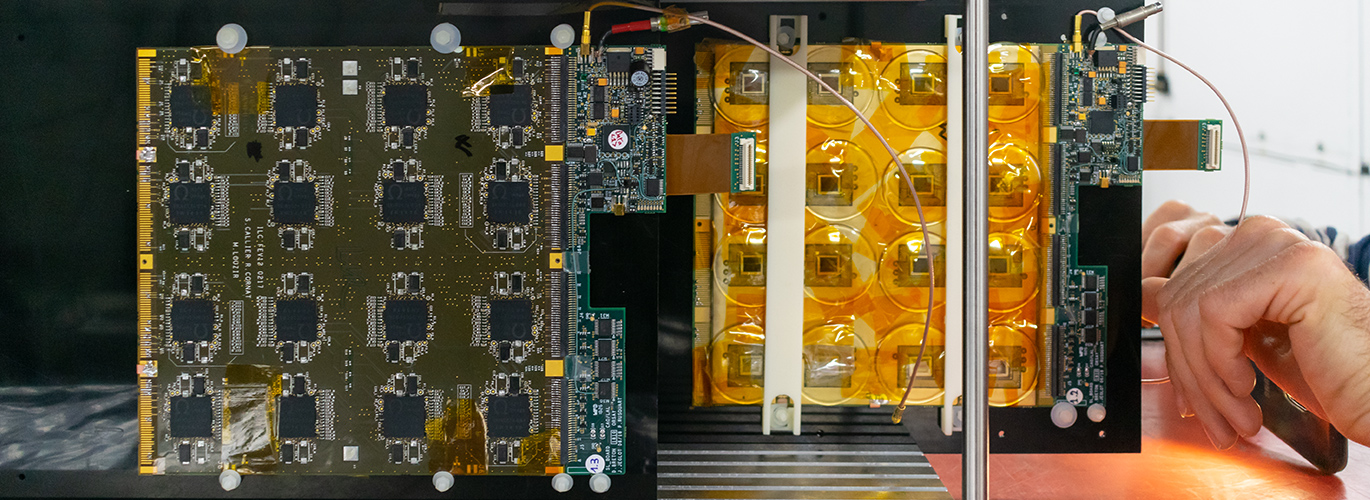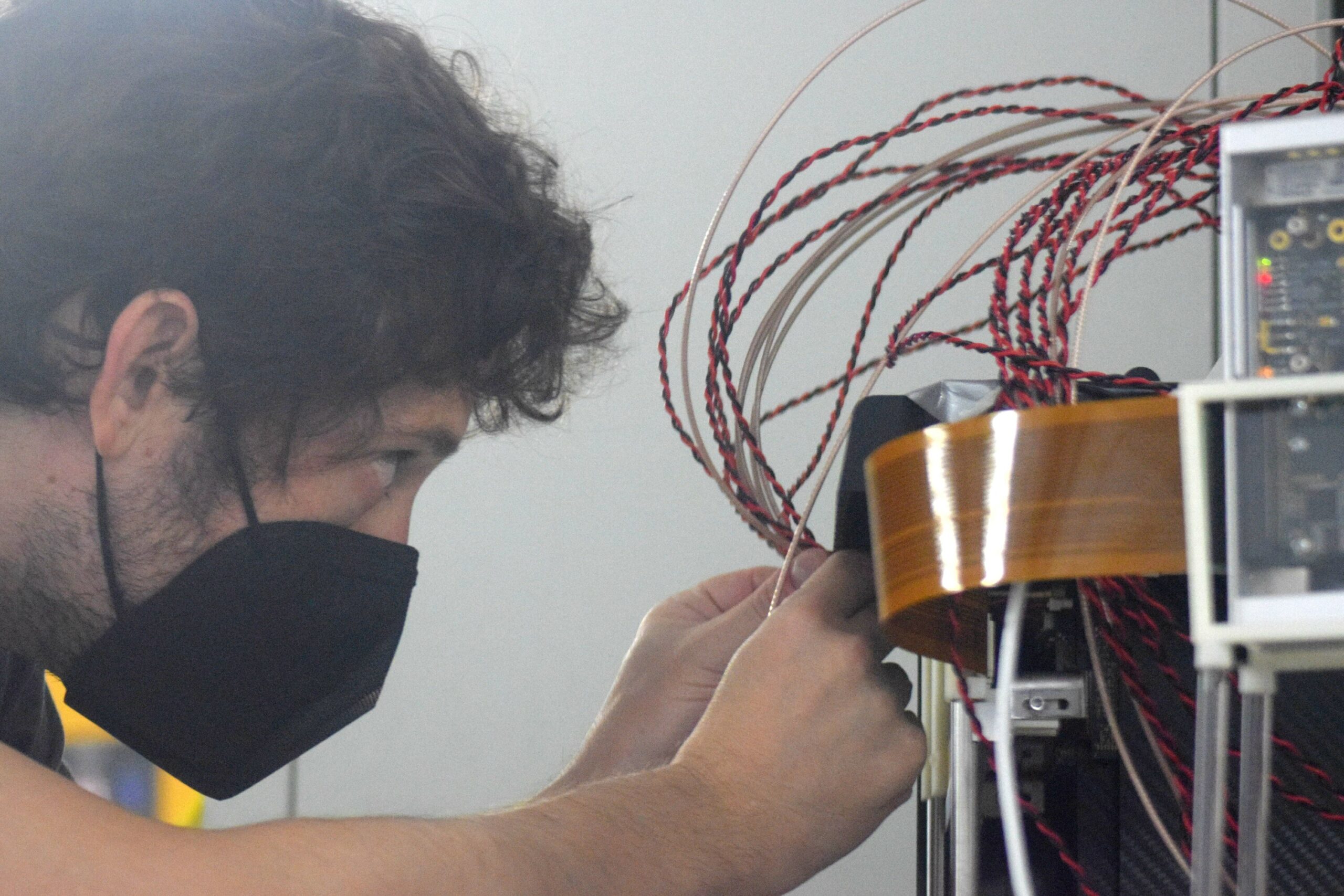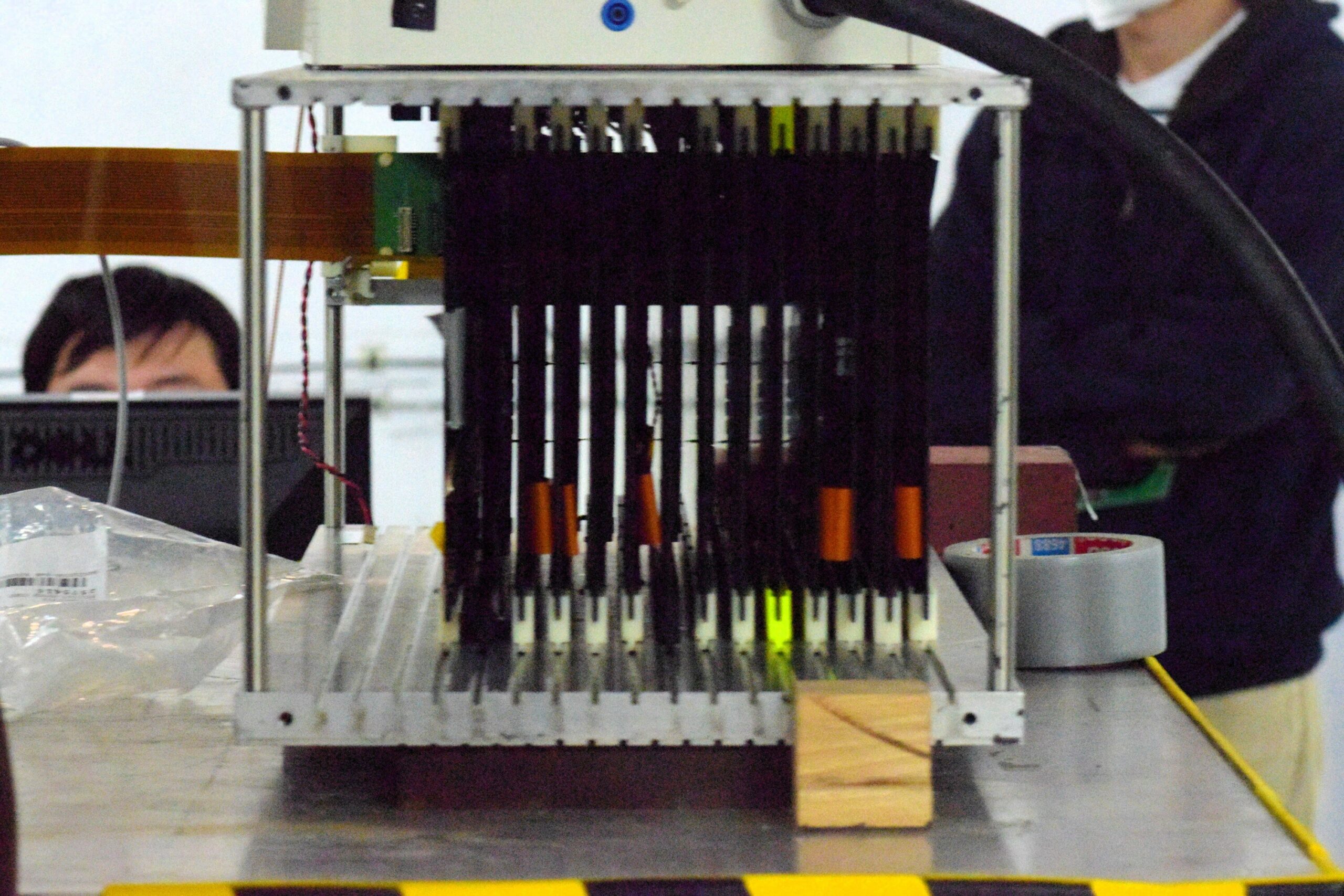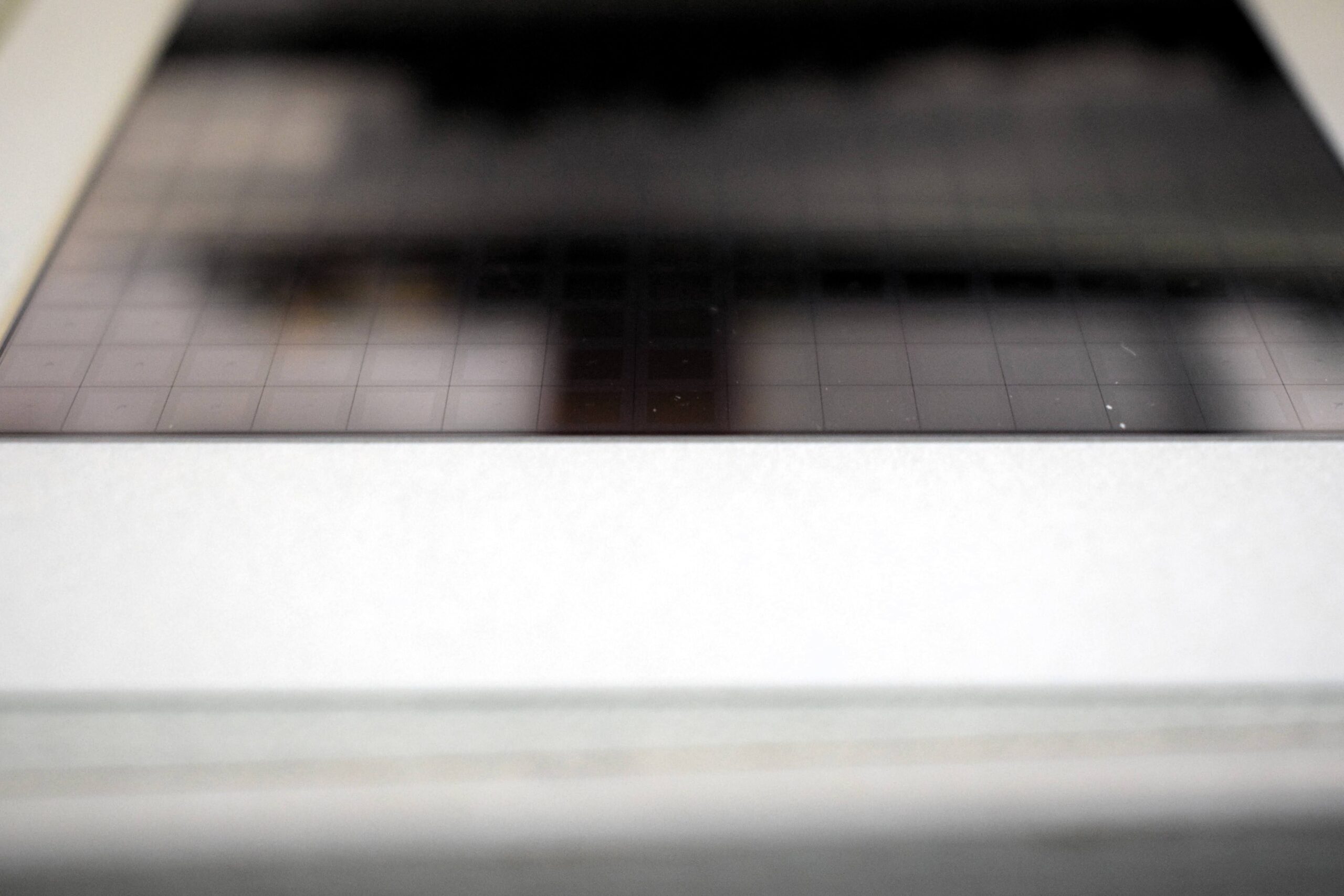
High Granular Calorimetry for Higgs Factories and other applications
DRD6-WP1: Sandwich calorimeters with fully embedded electronics

To meet the high precision levels foreseen by lepton collider experiments, the detector detectors will be based on the Particle Flow (PF) techniques. These techniques consist of choosing the best information available to measure the energy of the final state objects (i.e. measuring the charged particles momentum at tracking devices better than in the calorimeters). Therefore, PF techniques rely on single particle separation. For this purpose, PF algorithms require highly granular and compact calorimeter systems featuring minimum dead material. The R&D of highly granular calorimeters for future linear colliders was conducted within the CALICE collaboration and FCAL collaborations. The IFIC (AITANA) is a member of the CALICE collaboration since 2020, with A. Irles as institutional board representative of the IFIC in CALICE.
The Detector R&D (DRD) collaboration on calorimetry, also known as DRD6, is becoming a CERN Collaboration following an approval by the CERN Research Board to start on January 1st 2024. The FCAL and CALICE collaboration have been integrated within the DRD6.
The mission of the DRD6 and the scope of its activities are driven by the following goals and principles: the DRD6 develops calorimeter concepts as required for future high-energy physics experiments, focusing on those defined in the ECFA Detector Roadmap; the DRD6 shares the development of tools and infrastructure of common interest among the different projects: electromagnetic and hadronic calorimeters are developed in a unified approach.

The design and R&D of this prototype is conducted by CALICE and it is oriented at the baseline design of the ILD ECAL. The ILD ECAL is a sampling calorimeter of 24X0 of thickness (in the barrel region) and it uses silicon (Si) as active material and tungsten (W) as absorber material. The choice of Si and W allows the construction of a very compact calorimeter made up of compact active layers with small cell size (high granularity) in the transverse and longitudinal planes. It will consist of an alveolar structure of carbon fiber into which the slabs made up of tungsten plates and active sensors will be inserted. The very-front-end (VFE) electronics will be embedded in the slabs. The silicon sensors will be segmented in squared cells of 5×5 mm², featuring a total of∼100 million channels for the ECAL of the ILD. To reduce overall power consumption, the ILD ECAL will exploit the pulsed bunch structure foreseen for the ILC: the lepton bunchs trains will arrive within acquisition windows of∼1-2 ms width separated by ∼200 ms. During the idle time,∼99% of the time, the bias currents of the electronics will be shut down. This technique is usually denominated power pulsing. In addition, as the PF techniques demands minimum dead material in the detector, the design of the ILD foresees the calorimeters (hadronic and electromagnetic) to be placed inside the magnetic coil that provides magnetic fields of 3-4 T.
Members of the AITANA group are involved in the silicon-tungsten electromagnetic calorimeter, SiW-ECAL group. The SiW-ECAL team is composed by several groups from: France (IJCLab – ex LAL, OMEGA, LPNHE, LLR, LPSC), Japan (Kyushu University, KEK ), South Korea (SKK University) and Spain (the AITANA group from IFIC and the CIEMAT).
The LUXE experiment will explore the uncharted territory of strong field quantum electrodynamics (SFQED) in e-laser and γ-laser interactions at an effective field strength at and above the Schwinger limit. In this regime, non-linear and non-pertubative effects are expected to appear in the production rates of electron-positron pairs. Hence, the number of electron-positron pairs and their energy distribution in e-laser and γ-laser interactions are key characteristics to probe SFQED. In the LUXE experiment the positrons originating from trident production in e-laser and from the Breit-Wheeler process γ-laser interactions will be measured in a detector system consisting of a tracker followed by an electromagnetic calorimeter, ECAL-P. The ECAL-P design is based on a technology for highly compact electromagnetic calorimeters which was developed by the FCAL collaboration, an R&D collaboration to design, build and test prototypes of luminometers for future linear electron-positron colliders, (ILC or CLIC). In the γ-laser setup, also the spectra of electrons originating from the Breit-Wheeler process will be measured. For that purpose, the same tracker as for positrons will be followed by ECAL-E, a silicon-tungsten electromagnetic calorimeter based on the technology developed by the CALICE collaboration.
The highly granular ECAL-E is the reference design of the electromagnetic calorimeter for the International Large Detector (ILD) concept.
The tracker and both ECALs are located downstream of a dipole magnet which directs the positrons and electrons from the interaction point to the detectors. The correlation between the position and the energy of the positrons and electrons, determined by the dipole magnetic field, constitutes the basis for energy measurements in the tracker. By directly measuring the energy, the ECALs can determine whether more than one particle had almost the same path. Thus, the role of the ECALs is to determine, independently of the tracker, the number and energy spectra of electrons and positrons. The combination will provide an independent in situ energy calibration. In addition, it will ensure a good control of the beam-related background.
The AITANA group is involved in the design, optimization, construction and test of the two calorimeters for LUXE.
A. Irles is the institutional representative of the IFIC at CALICE.
A. Irles es deputy coordinator of the DRD6-WP1 package
Around the world with CALICE




The SiW-ECAL Technological Prototype


The group acknowledges the financial support from the MCIN with funding from the European Union NextGenerationEU and Generalitat Valenciana in the call Programa de Planes Complementarios de I+D+i (PRTR 2022). Project (Si4HiggsF), reference ASFAE/2022/015




